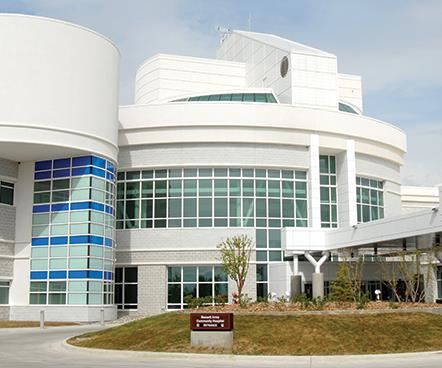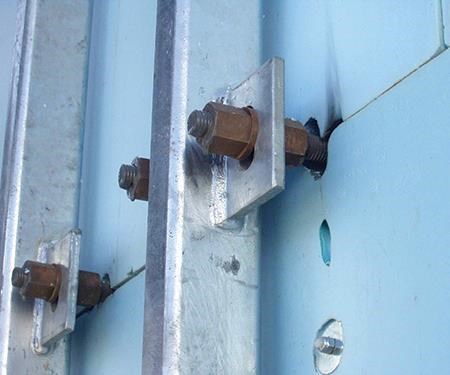Pultrusions provide composite thermal break
Army hospital combats Alaskan cold with FRP shapes/fasteners.
From highs in the summer pushing 33°C to winter lows in the range of -40°C, the climate in the US state of Alaska presents a challenge for engineers and architects. Temperature swings were a concern during design and construction of the Bassett Army Community Hospital at Fort Wainwright, a US Army base adjacent to the city of Fairbanks, just 190 km south of the Arctic Circle.
Architectural joint venture HKS Inc./Wingler & Sharp (Dallas, TX, US), which led the project, anticipated problems with thermal conductivity and thermal bridging, whereby building heat is lost through metal-to-metal contact between fasteners and components in exterior walls. When too much thermal transference occurs, cold spots develop and moisture condenses, which can lead to mold growth.
Although steel offers better thermal performance than other metals, fiber-reinforced polymers (FRPs) have a thermal conductivity 1/100th that of steel and offer the potential for significant energy savings when employed as a thermal break between a building’s exterior and interior.
With that in mind, the project’s chief structural engineer, Larry A. Johnson, P.E., designed a structural solution that minimizes the thermal conductivity through the exterior walls. He bolted composite structure to the spandrel beams (beams that span between structural columns) of the project’s structural steel framing system. Strongwell’s (Bristol, VA, US) trademarked EXTREN structural shapes were specified, including 300-mm by 12.5-mm flanges, 200-mm by 55-mm by 9-mm channels and FIBREBOLT FRP threaded composite rods and hex nuts to support the exterior masonry façade/cladding. The composites act as a thermal break between the warm and cold sides of the exterior walls.
EXTREN is a pultruded fiberglass/polyester, available in more than 100 standard engineered shapes. Each shape features a surface veil to protect against glass fibers penetrating the resin surface in service, increasing its corrosion and UV resistance. Johnson specified EXTREN Series 525, made with a fire-retardant polyester resin.
The only Army hospital in Alaska, this state-of-the-art facility features nearly 24,155m2 of clinical/administrative space and is named for John Bassett, who was killed while defending Attu Island in the Aleutian Islands from Japanese attack during World War II.
Related Content
-
One-piece, one-shot, 17-meter wing spar for high-rate aircraft manufacture
GKN Aerospace has spent the last five years developing materials strategies and resin transfer molding (RTM) for an aircraft trailing edge wing spar for the Airbus Wing of Tomorrow program.
-
Plant tour: Albany Engineered Composites, Rochester, N.H., U.S.
Efficient, high-quality, well-controlled composites manufacturing at volume is the mantra for this 3D weaving specialist.
-
PEEK vs. PEKK vs. PAEK and continuous compression molding
Suppliers of thermoplastics and carbon fiber chime in regarding PEEK vs. PEKK, and now PAEK, as well as in-situ consolidation — the supply chain for thermoplastic tape composites continues to evolve.



















